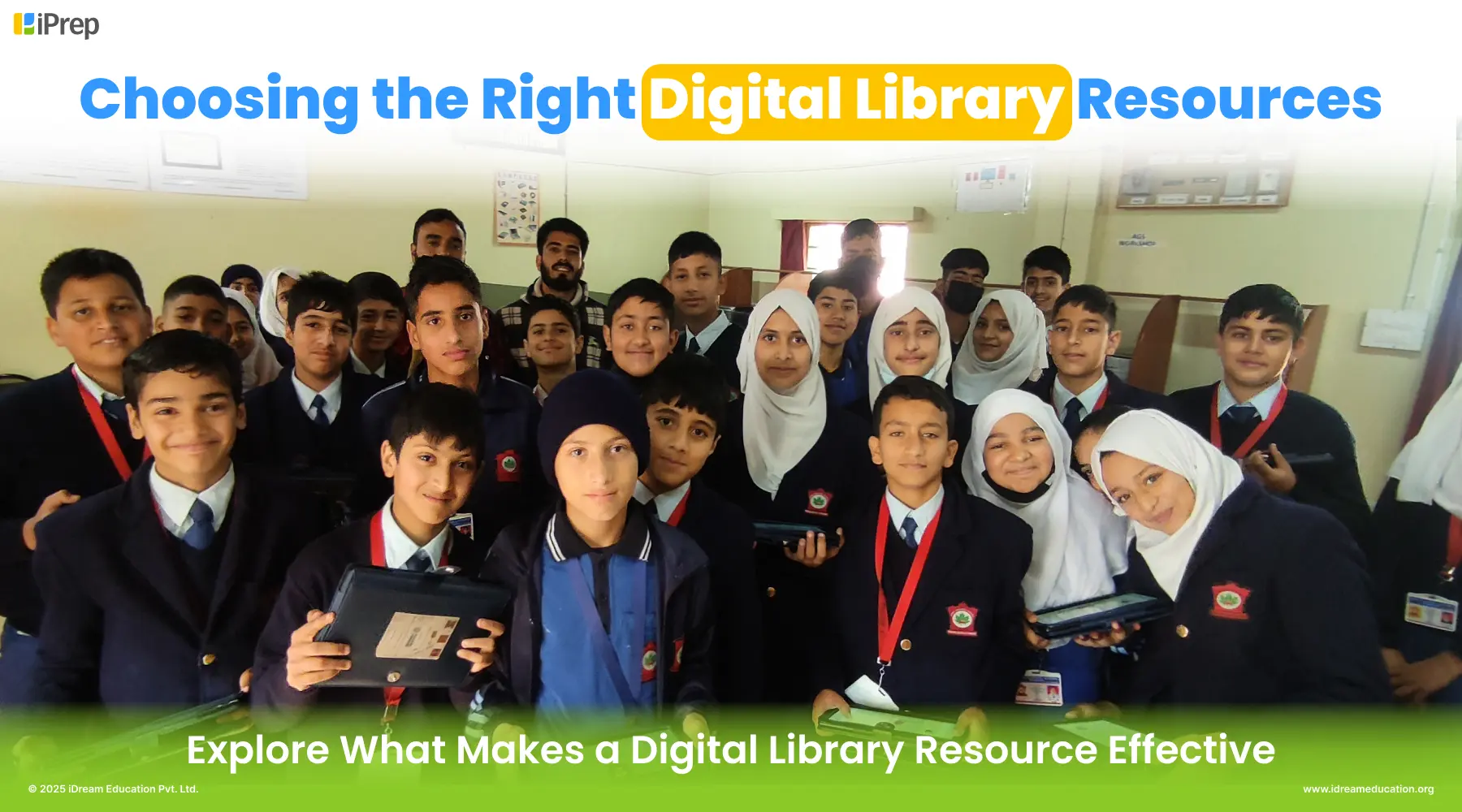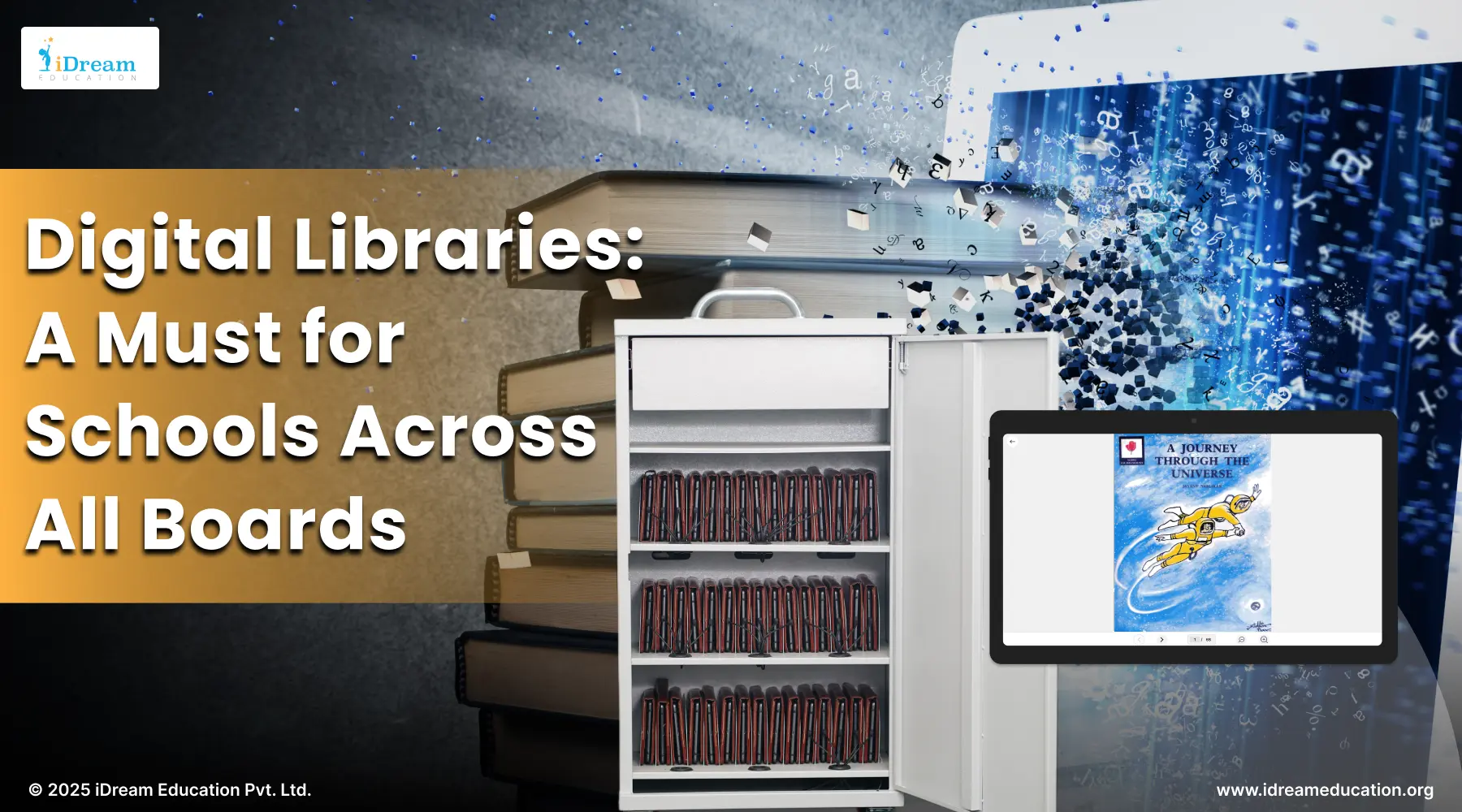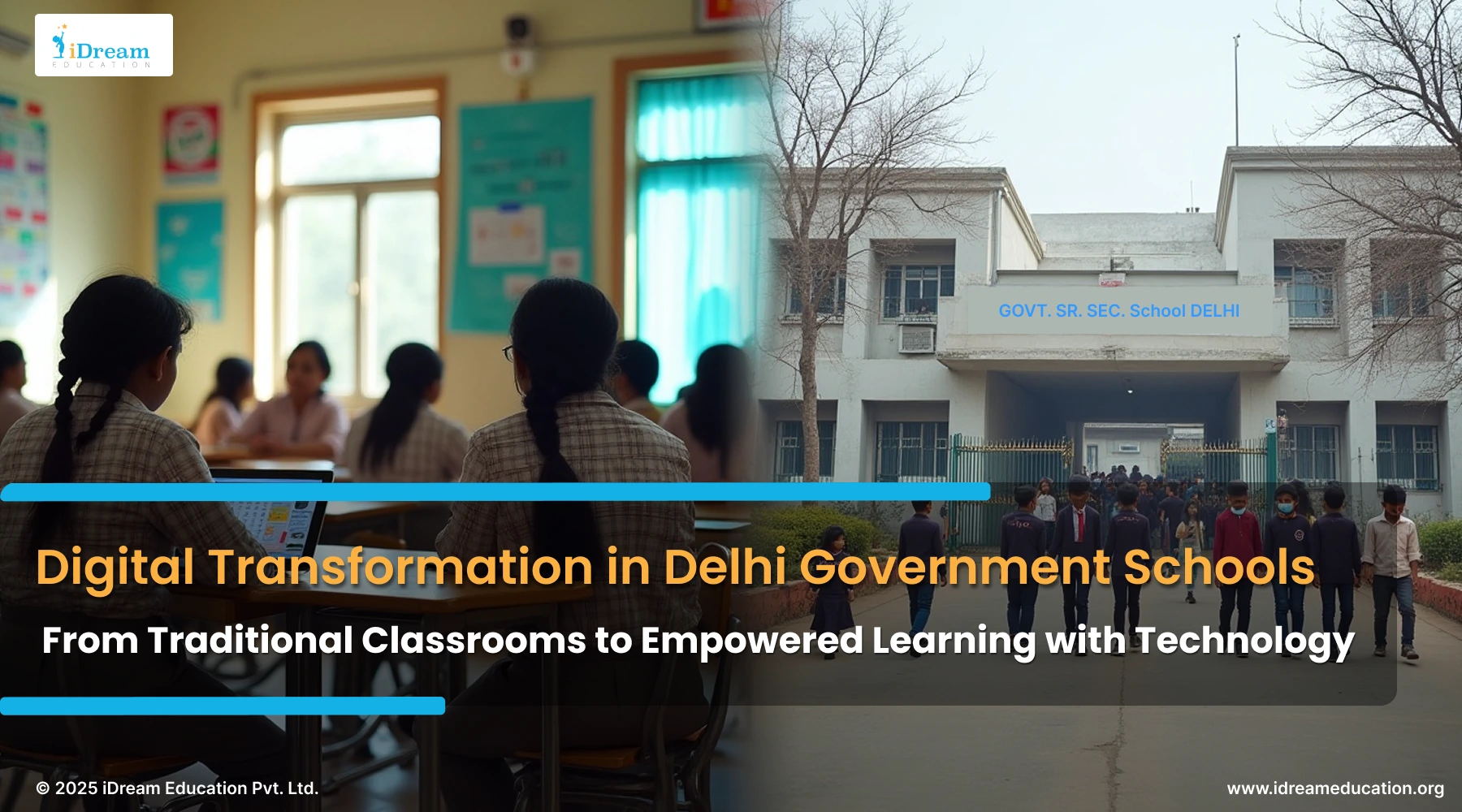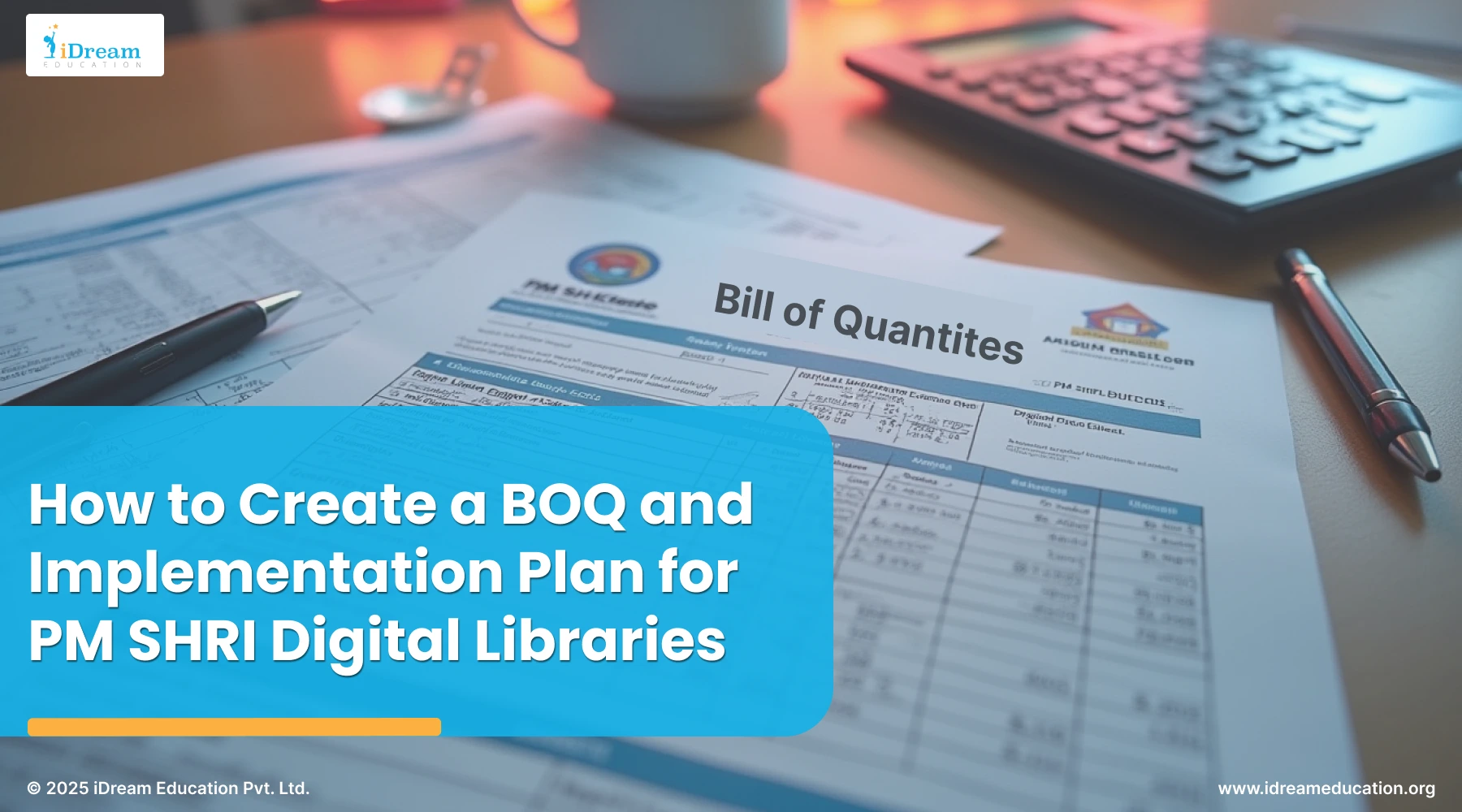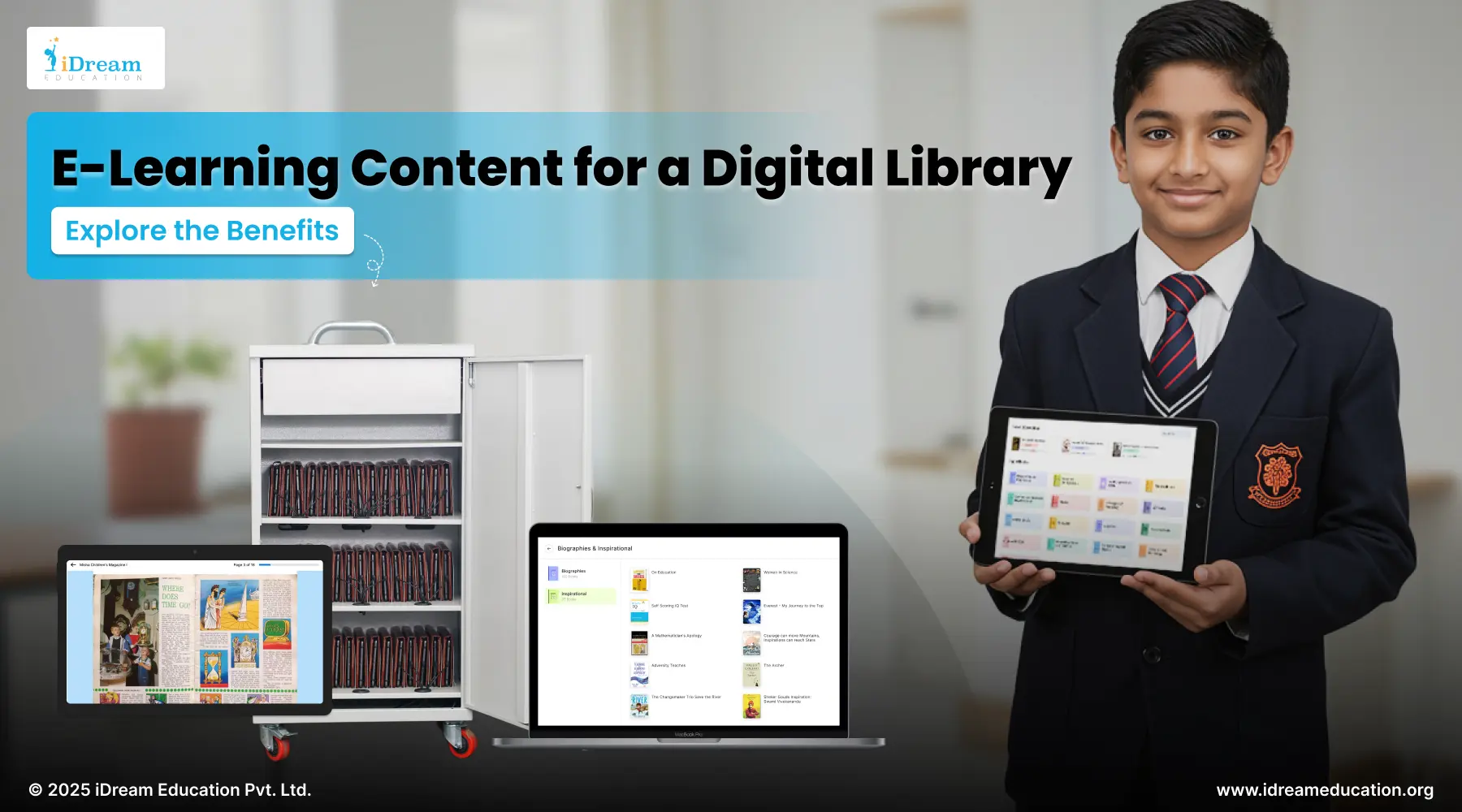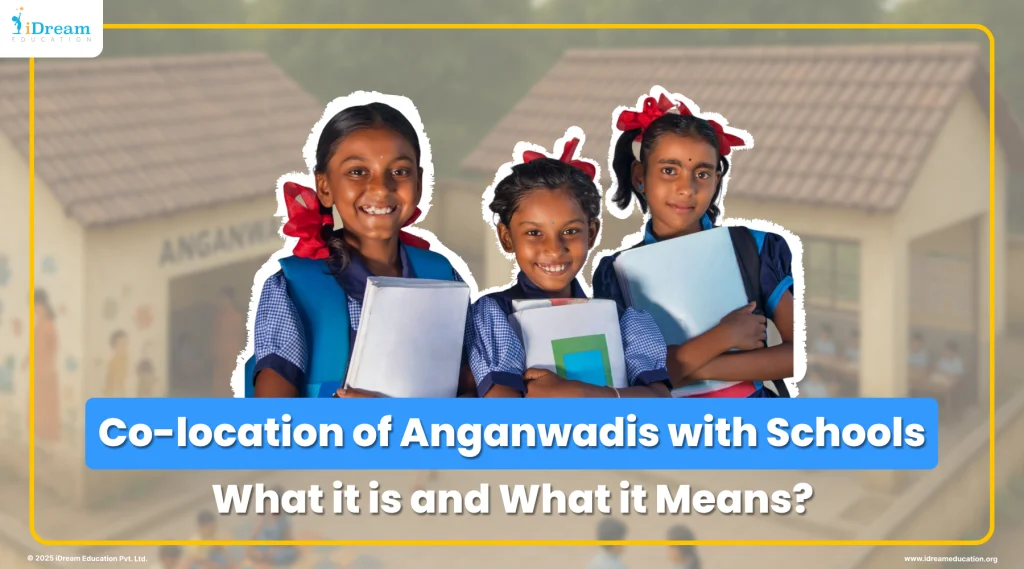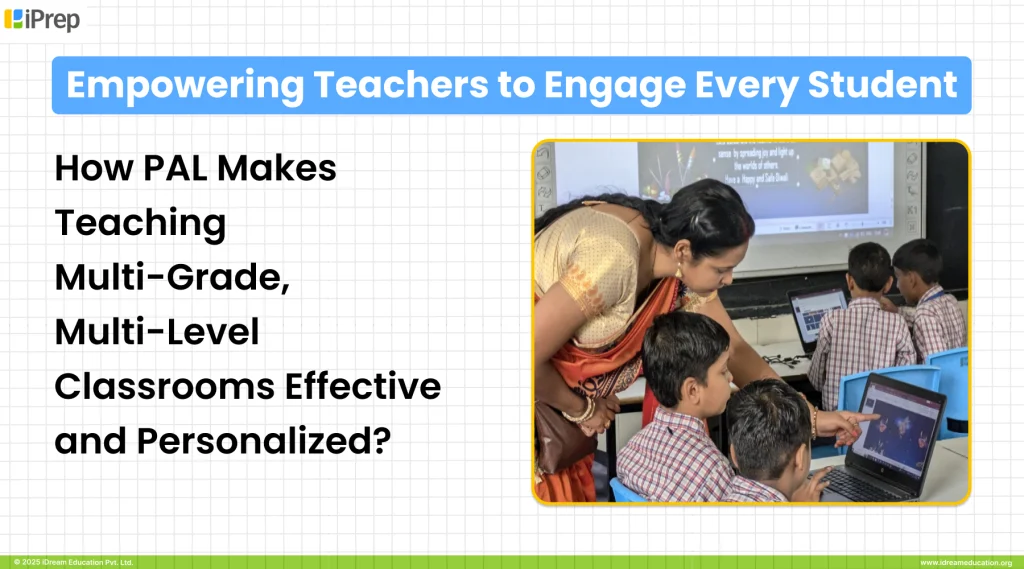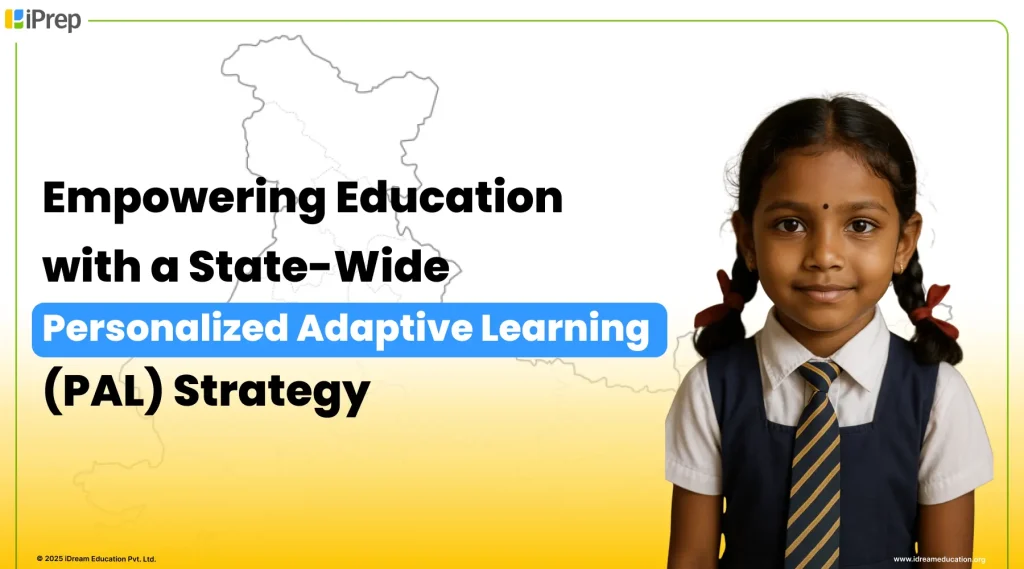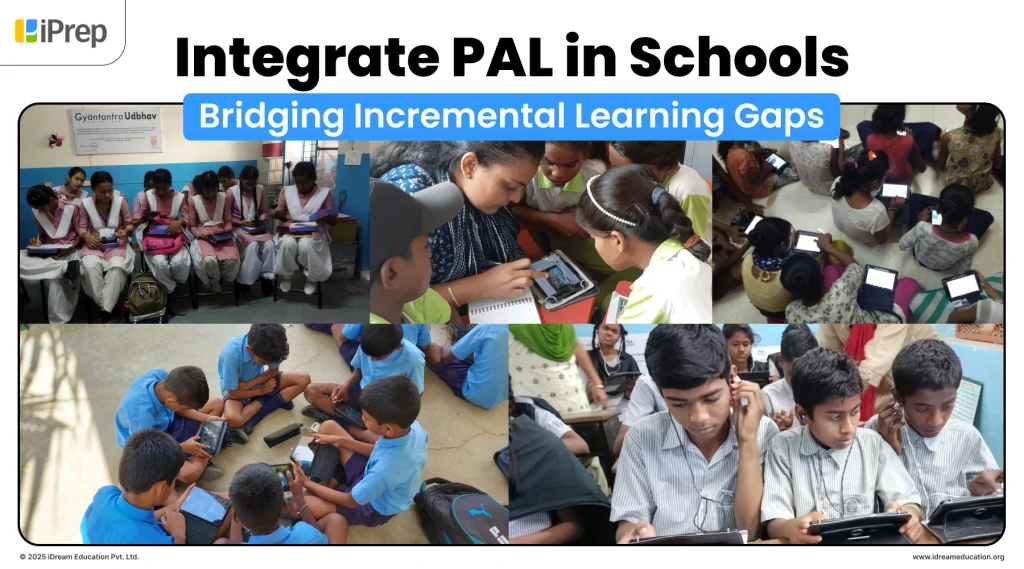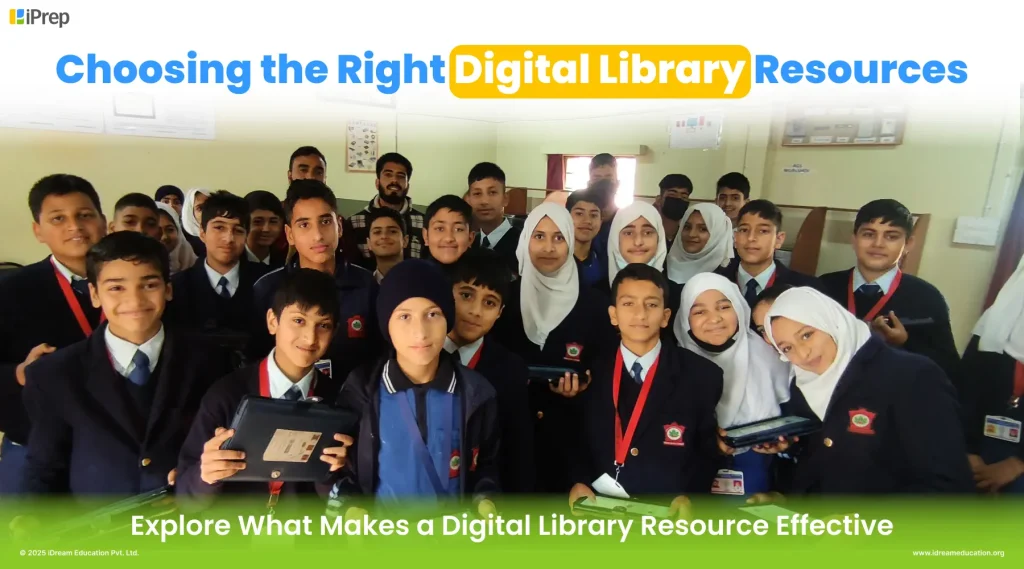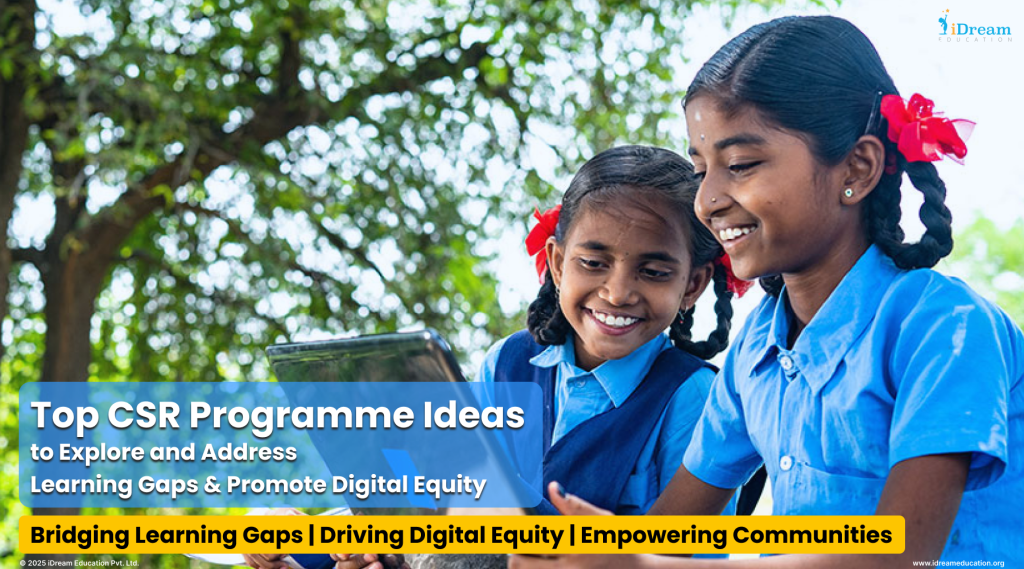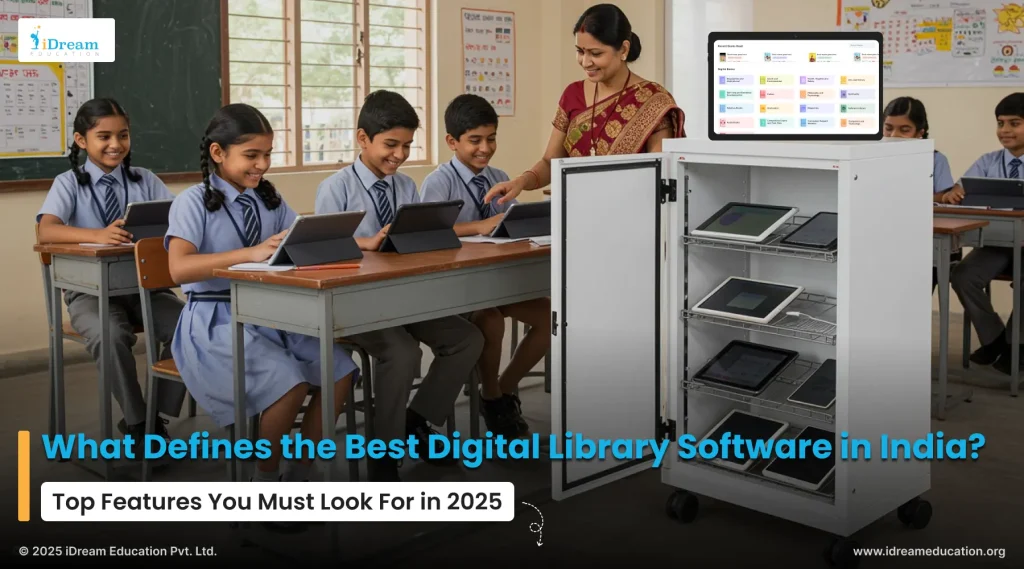
As India moves towards building a knowledge-based society. There is a growing emphasis from both government bodies and social organisations on establishing a robust digital library infrastructure. This is especially in schools, rural institutions, and community centres.
What is the primary reason behind this?
The reason is not just the idea of offering access to a vast pool of books. But doing it in a way which offers well-structured Digital Library Software Platforms that can work even in offline environments. In fact, the focus is no longer just on digitising content. It has now shifted towards making access equitable, seamless, and user-friendly for learners of all ages and regions.
Historically, libraries in India especially in public and school settings have been underutilised. This is due to physical limitations, lack of up-to-date content, and maintenance challenges. Digital libraries, powered by software platforms, are changing that. They hold the promise of enhancing any space into a joyful and personalized learning zone by offering curated e-books, interactive resources, and even audio-visual learning content in multiple languages. And when equipped with offline functionality, they become highly relevant for rural or low-connectivity areas, supporting inclusive education goals.
The year 2025 is a turning point where the integration of technology with education is no longer optional—it’s essential
Hence, choosing the best digital library software platform is critical. Stakeholders must look beyond flashy interfaces and consider how these platforms store, organise, recommend, and track usage of content. With the rise of NEP 2020-driven reforms and initiatives such as PM eVIDYA and DIKSHA, there’s a clear shift towards personalised, decentralised, and tech-enabled access to quality learning material.
Let’s Look at Key Features of Best Digital Library Software Platform
When evaluating a best digital library software platform, especially in the diverse and evolving Indian educational landscape, it’s important to look beyond just content availability. The best platforms are those that not only host a rich and varied collection of digital resources but also offer a seamless user experience, work reliably in offline mode, and align with the local needs of learners, teachers, and institutions. Here are the key features that can make your investment in a best digital library software platform truly impactful, both today and in the years to come:
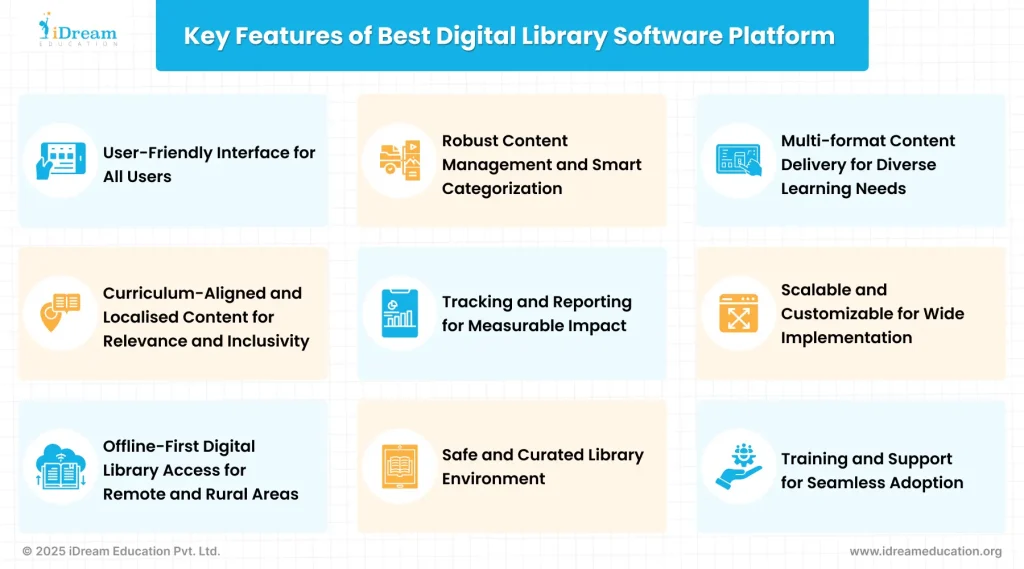
User-Friendly Interface for All Users
One of the most essential features of a best digital library software platform is how user-friendly its design is. Especially in school settings, where users range from students and teachers to administrators with varying degrees of tech familiarity, an intuitive interface becomes critical. Here’s what to look for:
- Designed on Universal Design Principles: The digital library platform should be built to accommodate all users, from the least tech-savvy to the most advanced. Universal design ensures inclusivity by making the navigation structure simple and predictable.
- Easy Navigation for All: The interface should enable students, teachers, and administrators to find and access the content they need with minimal clicks and no confusion.
- Mobile-Responsive Design: The digital library software should work seamlessly across devices including tablets, desktops, laptops, and smart classroom setups.
- Optimized for Low-Tech Users: The design should reduce friction and be intuitive enough for users who may not be comfortable with technology. For example, features such as guided tutorials, visual cues, and contextual help buttons can support ease of use.
- Minimal Learning Curve: One of the best digital library platforms is the one for which users should not need extensive training to start using the platform. A well-designed digital library software feels familiar and easy to use right from the first interaction.
Robust Content Management and Smart Categorization
The best digital library software platform must go beyond simply storing resources. It should organize and present them in a way that makes discovery effortless and intuitive for both students and teachers. Here’s what defines this feature:
- Smart Tagging & Filters: The best digital library software platform uses smart tagging systems that classify each resource (books, stories, journals, sample papers, etc.) based on relevant metadata. With smart filters, students can narrow down content in just a few clicks so that no time is wasted searching aimlessly.
- Multi-Level Search Functionality: The platform should allow users to search and filter digital library resources by class, subject, and language. This ensures personalized access, especially important when learners access the platform in shared/ short library sessions.
- Quick Discovery of Resources: Whether it’s a Class 5 student looking for a Hindi storybook or a Class 10 teacher searching for science sample papers, the system should allow them to find exactly what they need quickly.
- Dynamic and Up-to-Date Content Repository: The best digital library software platforms are not static. They get regularly updated with newly published books, fresh reading materials, and content aligned with evolving government guidelines, curriculum changes, and educational focus areas.
- Categorized for Every Learning Need: Resources should be neatly organized under categories such as curriculum-aligned books, general reading, exam prep, activities, and more. This makes the digital library truly multi-purpose.
Multiformat Content Delivery for Diverse Learning Needs
With the reduced attention span of 21st-century learners and the varied preferences in how students consume content, the best digital library software platforms must offer content in multiple formats to keep learning engaging, inclusive, and accessible. Key aspects include:
- Supports Multiple Content Formats: The digital e-library software should allow access to a wide variety of content types such as textbooks, eBooks, PDFs, biographies, quizzes, and interactive learning modules. This ensures students can engage with learning in the format they relate to best.
- Online + Offline Access Capability: To make digital libraries scalable across urban and rural areas alike, the best digital library software should support offline access. This is crucial for low-bandwidth or no-internet zones, ensuring even last-mile learners can benefit from rich e-library content.
- Content Accessibility Across Devices: Whether accessed on a tablet in a smart classroom or via a chromebooks, digital library software should be able to load all formats smoothly and consistently. This ensures a uniform experience to all users.
Curriculum-Aligned and Localised Content for Relevance and Inclusivity
With the increasing emphasis on digital learning across all grades and schools in India, the best digital library software platforms must offer curriculum-aligned and locally contextualized content to truly support school education. Here’s what this feature should include:
- Mapped to NCERT and State Board Syllabi: The digital library software must provide reading resources and learning materials aligned with the NCERT as well as various State Board curriculums. This ensures that students and teachers can rely on the digital library for academically relevant content across classes. When searching for it, you can also explore specific needs such as a CBSE digital library, digital library for the Tamil Nadu Board, and more.
- One-Stop Access to All Educational Resources: From textbooks to storybooks, reference materials, and practice papers, all should be accessible in one place. A well-structured and syllabus-linked e-library content helps teachers plan lessons and allows students to revise without needing to search elsewhere.
- Includes Regional Language Content: To promote linguistic inclusivity, the e-library platform should offer content in multiple regional languages. This also ensures accessibility across India’s diverse classrooms. This is especially valuable in government and rural schools where regional language is the primary medium of instruction.
- Age and Grade-Appropriate Coverage: The platform should offer a wide range of digital e-library resources catering to all grades (Pre-primary to Class 12) and all subjects. The best digital library software is the one that carefully curates to match the cognitive level and language understanding of students at different age groups.
Tracking and Reporting for Measurable Impact
In today’s education ecosystem, the focus of digital library solution and other digital solution implementation has shifted from just availability to actual usage, adoption, and learning outcomes. Therefore, a best digital library software platform must come equipped with strong tracking and reporting capabilities. Here’s what this includes:
- Detailed Usage Analytics: The e-library platform should track who is using the library, how often, and what type of content is being accessed. Whether it’s books, videos, or quizzes, e-library usage data should be available by student, content category, grade level and overall/individual time spent.
- Content Engagement Insights: e-library analytics should offer insights into which content is most preferred, which resources need improvement, and where there are gaps. This helps implementing partners and project administrators optimize the content strategy to improve both relevance and usage.
- Supports Data-Driven Decision Making: For schools, NGOs, and government departments, this data becomes essential for planning interventions, identifying under-utilized resources, and measuring the impact of digital library implementation.
- Monitors Learning Progress and Outcomes: By tracking how students engage with different types of content over time, the digital library software helps assess learning engagement trends, indirectly contributing to understanding student progress and performance.
- Scalable Impact Measurement Across Centres: Whether it’s one school or 100 or more schools/learning centers, a strong reporting module of digital library software helps stakeholders evaluate success, decide where to expand next, and replicate high-impact practices at scale.
Scalable and Customizable for Wide Implementation
The best digital library software platforms are not one-size-fits-all. They are built to adapt to different educational settings, infrastructure setups, and project goals. A scalable and customizable platform ensures seamless rollout across schools, districts, or even entire states. Here’s what to look for:
- Easy Scalability Across Locations: The digital library software should be capable of being deployed across multiple schools, learning centers, or geographies. Whether urban or rural, without needing extensive infrastructure changes. This supports statewide or education based NGO led rollouts with consistent quality.
- Customizable for Different Needs and Budgets: Each school or project may have unique needs. The digital library software should support flexible implementation. Flexibility in terms of devices, features, and deployment scale based on the available budget and learning goals.
- Compatible Across Devices and Hardware: Whether the school requires digital library software on tablets, Chromebooks, smart class setups, or basic desktops, the best one should work smoothly on all configurations. This ensures that schools can utilize existing hardware and don’t have to invest heavily in new infrastructure.
- Supports Project-Specific Configuration: NGOs, CSR or government departments may have different focus areas. Thai could be foundational literacy, reading e-library content, or exam prep. A customizable platform allows tailoring the content categories to fit project-specific requirements.
- Built for Future Expansion: As a project grows the best digital library software should allow adding more classes, subjects, without major system overhauls.
Offline-First Digital Library Access for Remote and Rural Areas
In a country as diverse as India, internet connectivity remains a challenge in many rural and remote regions. That’s why the best digital library software platforms must follow an offline-first approach. Offline digital library ensures access to quality digital learning resources even without continuous internet access. Here’s how:
- Offline Access Through Multiple Mediums: The e-library platform should support content delivery via SD cards, pen drives, or local servers. These flexible formats allow deployment in areas with low or no connectivity.
- Reliable Access Without Internet Dependency: Once e-library content is installed, students and teachers should be able to browse, search, and engage with the full digital library without needing to go online. This makes it highly reliable for uninterrupted usage.
- Supports Periodic Sync and Updates: When internet becomes available (e.g., via mobile hotspot or limited broadband), the best digital library software is the one that allows content updates and usage data sync.
Safe and Curated Library Environment
A digital library software meant for school education must ensure a safe, distraction-free, and age-appropriate experience for its users. The best e-library platforms are thoughtfully designed to offer a secure digital space focused purely on learning. Key elements of this feature include:
- Age-Appropriate and Curated Content: All resources such as stories, biographies, sample paper, etc. should be educationally relevant & student friendly. e-Library content should be carefully reviewed to suit the developmental stage of each grade group.
- Ad-Free and Distraction-Free Interface: The platform must operate with no third-party advertisements, pop-ups, or unnecessary notifications. This ensures a focused learning experience, free from external influences or inappropriate content.
- No External Links or Unsafe Redirects: A closed, secure system with no links to unverified websites or content. This helps maintain the integrity of the school-safe environment and builds trust among parents, teachers, and administrators.
Training and Support for Seamless Adoption
A digital library software is only as effective as its adoption in daily school life. To ensure smooth integration and sustained usage, the best platforms offer comprehensive training and ongoing support for both students and teachers. Here’s what this entails:
- Student and Teacher Onboarding: A best digital library software provider would be the one who offers structured onboarding sessions. This helps students and teachers understand the platform’s features, how to navigate it, and how to access different types of content with ease from day one.
- Technical and Functional Training: Hands-on training ensures that even low-tech users become confident in using the digital library software. This includes guidance on accessing offline content, using filters, search and tracking usage.
- Support for Daily Integration into School Routine: A best digital library software provider will be the one who ensures teachers guidance. This should be focused on how to embed digital library usage into classroom activities, revision sessions and setting library timetables.
Bring the Best Digital Library Experience to Your Schools/Community Centre/NGOs with iDream Education
If you’re seeking for the best digital library software platform that truly checks every box – from user-friendly design and multiformat content to offline access and usage analytics. iDream Education is your ideal partner. We offer a robust, scalable, and inclusive digital library solution with thoughtfully curated for safe and age-appropriate e-library content
Whether you’re an NGO, a school, a CSR initiative, or a government body — we’re here to support you. We can be your technical partner for setting up a digital library. Plus, we can be your content partner by enabling a rich library of engaging and educational resources. Moreover, we can also support you in end-to-end implementation partner for deploying digital libraries in any location.
Our platform offers all the key features of the best digital library software, including:
- Intuitive, device responsive design
- Smart e-library content categorization and curriculum mapping
- Multiformat e-library content
- Offline-first access via SD cards, pen drives, or local servers
- Usage tracking and reporting dashboards
- Teacher-student onboarding and continuous support
- We are fully equipped to set up digital libraries on devices of your choice. This includes tablets, desktops, smart class hardware, or local server based digital libraries.
We’d be happy to share more details. We would be happy to guide you through our implementation process, and even organize a demo tailored to your needs. So, if you’re looking for the best digital library software that’s practical, inclusive, and outcome-focused, reach out to us at +91 7678265039. You can also write to us at share@idreameducation.org or share your details here.
Frequently Asked Questions -
1. What is a digital library platform?
A digital library platform is an online or offline software where students and teachers can access e-books, biographies, journals and almost all digital library content in one place.
2. Can I use a digital library platform without the internet?
Yes, many digital library platforms such as iPrep Digital Library offer offline access through SD cards, USB drives, or local servers.
3. Is content on a digital library platform available in local languages?
Yes, leading platforms provide multi-language content to support regional learners.
4. Is a digital library platform safe for children?
Yes, trusted digital library platforms that are ad-free, secure, and give a distraction-free learning environment are safe for children to access
5. Can a digital library platform be set up in multiple schools?
Yes, it can be scaled and customized for many schools and institutions.


